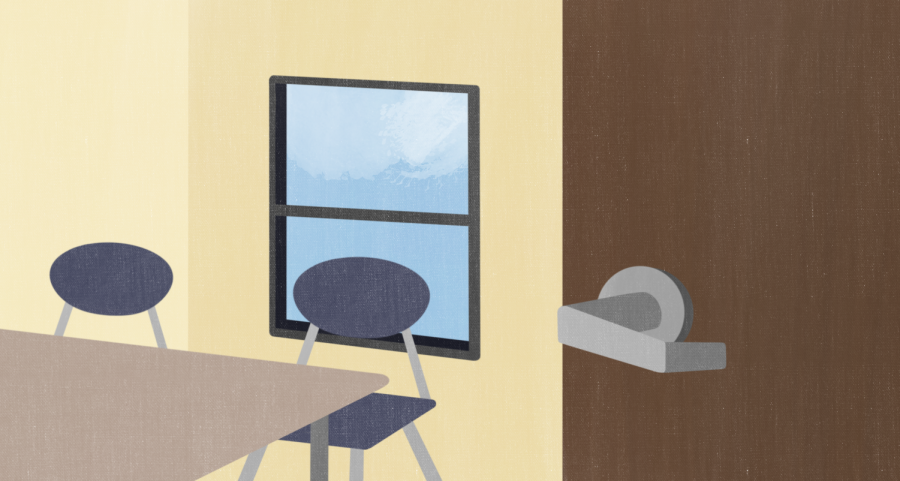Editorial | University requires definition regarding “new normal”
April 8, 2021
As fall approaches, and the COVID-19 pandemic slowly but bitterly recedes, the University’s general silence on the 2021-2022 academic year becomes deafening.
Despite a recent update from leadership outlining “anticipations,” the University consequently lacks sizable communication and transparent planning regarding this subsequent academic year. Despite the encouragement in the update, overall the message reflects more a “hope for the best” memo than a relevant strategy.
It is imperative for the administration to effectively speak with students and faculty on arrangements concerning this next academic year. It is also essential that comprehensive statistics and propositions are delivered to guarantee sensible accommodations for campus life’s revival.
In a statement published in mid-March, University of Illinois System President Tim Killeen remarked, “Barring a marked change in the pandemic’s current trajectory, we intend to welcome students back to a more traditional, more personal campus experience next fall.” Despite the well-received positivity, clearer language other than “a more traditional, more personal campus experience” is mandatory to legitimately serve students and faculty.
Quoted in the Chicago Tribune, Andreas Cangellaris, vice chancellor for academic affairs and provost, fortunately, provided concrete numbers and anticipates, “faculty should anticipate classrooms will be filled to 50% capacity, or capped at 200 people.”
Similarly, Cangellaris added, “50% capacity with an upper limit of 200 individuals will allow a large percentage of our classes to be offered in person.” In-person aspirations exist, yet the extensive framework for communication and reasoning for students returning remains dreadfully vague.
For any compelling “new normal,” prioritizing academic and campus quality will be paramount. Thus far, the administration has displayed prominent skill in mitigating COVID-19 outbreaks — maintaining minimal positivity rates, as well as earning praise from various outlets and fellow universities.
As such, it is within reason to request school management to exercise the same inquiry for safety while balancing the priority of in-person activities.
Ensuring enough are vaccinated for classes, as well as clear, dependable policies directly protecting the University body are mere stepping stones in the journey to an orderly campus environment. A supplementary safe objective for preparations must include supplying mental health resources for those afflicted by the pandemic’s solitary-inducing nature.
Predating the pandemic, the mental health conditions of students were already crippling. Today, both for those on and off campus these last semesters, COVID-19’s effects on mental health have been calamitous for students’ futures. Exacerbated with this ensuing loneliness and “Zoom fatigue,” faculty and students presently await a detailed, impressive proposal incentivizing for a fascinating, yet shielded return.
Ambiguity surrounding which classes will be online versus inperson, broad “goals” and inconclusive intentions deteriorate the prospects for a decisive “new normal.” Nevertheless, the University requires equal vigor as was implemented in handling COVID-19 for the fresh promise of an admirable rebound.
However, simply asserting the conditions for a “new normal” is not sufficient. While other university leaders deplete the phrase of any legitimacy — including Iowa State’s President and University of Wisconsin-Madison’s Chancellor — this administration must breathe life into the exhausted saying.
The “new normal” is more than a Massmail detailing certain ambitions for a campus return. A bonafide recovery implies transparent dialogues between campus directors and the respective body: Prioritization and accounts of specific revisions are central to this restoration.
Accordingly, risk management will be present no matter the preferred outcome dictated by the school. Whether there is an immediate emphasis on in-person or a gradual focus on campus rehabilitation, COVID-19 woes and risks will not retreat in these successive semesters.
The University’s pandemic maneuvering has appropriately warranted applause, but it is essential to remind oneself of its long-term purpose: the secure reappearance of all students and faculty into C-U.
Undoubtedly, SHIELD has proved to be an astounding achievement. Correspondingly, if the University demonstrates equivalent priority delivering in-person value to its students and faculty, anxieties would be inefficient.
Besides victories defying COVID-19, the administration, publicly, is not as fine-tuned in acknowledging its following steps. The 2021-2022 academic year is the latest opportunity for school leadership to prove itself once again.
Effective accommodations arrive when the detailed, public emphasis shines on individuals personally attending classes. With vaccinations, likewise, providing a light at the end of the tunnel each day for general society, the future awaits for the University to properly illustrate this “new normal.”







